The Bedfordshire Regiment in the Great War

Photographs and Biographies from the 6th Battalion
|
Private 28445 Albert James ADCOCK Albert endured a month in the southern areas of the Somme battlefields, after which he was moved with the Battalion to hold quieter trenches around Loos for two months. After receiving further training for some weeks in offensive operations, Albert went south with the Battalion to take part in the Battle of Ancre in November 1916, and fought in and around Beaumont-Hamel. During an attack three days into the battle that was held up by unbroken belts of German wire, Albert was killed in action on a freezing cold day, in the valley east of Beaumont-Hamel as the Battalion tried in vain to reach and assault German positions on the ridge called Munich Trench. He lost his life on the 16th November 1916 during the British army's final offensive operation of the infamous Somme campaign of 1916. Albert's body was the only Bedford to be recovered and identified in the spring of 1917 when British troops cleared the battlefield having finally won the positions that Albert died fighting to take. Those who were taken back to the casualty areas were buried in Beaumont Hamel and over half of the fallen from that cold winters day have no known grave. Albert Adcock was buried in the Redan Ridge Cemetery, north west of Beaumont-Hamel, where he lies today along with the unidentifiable bodies of many of his comrades. |
|
Private 12913 Harold Arthur CHARGE Harold enlisted into the 6th battalion on the 28th August 1914 and arrived at Le Havre on the 30th July 1915. He had a relatively "quiet" introduction into life in the trenches that saw him serve at Ypres, Loos and on the Somme between August 1915 and July 1916. But when the New Army was put to the test in July 1916 Harold and his colleagues found themselves in the largest battle their country had ever seen - The Battle of the Somme. He survived several actions in July and August, including the horrendous assault against Pozieres on St. Swithen's Day. On the 13th November 1916 British forces launched a surprise attack along the Ancre river valley on the extreme north of the Somme sector. Despite atrocious conditions and casualties they took heavily fortified 1st line positions and Harold and his comrades were called forward to carry the assault on to the German 2nd line trenches, high on the ridge across the valley. On the morning of the 16th November in thick snow, Harold and the 6th battalion marched uphill and in perfect formation, straight into the teeth of the deadly accurate German Machine guns and artillery that soaked the area. Despite their best efforts, the wire had not been cut by the British bombardment and the men simply could not carry their bayonets into the German positions however hard they tried. Harold was one of the 160 plus casualties suffered by the battalion that day and would never serve in the front lines again because of the nature of his injuries. Having been moved back through the medical system, Harold found himself at the 13th General Hospital in Boulogne where he was close to death for some weeks. Nevertheless he survived and recovered enough to serve in the Royal Defence Corps, probably in 1918 and later in the Agricultural Company of the Labour Corps until his service ended in March 1919. By his demobilisation Harold was fit enough to have been capable of training for full military service again, despite the injuries he had received on the cold Somme battlefield two and a half years earlier. He was transferred into the Army Reserves in case hostilities flared up again but was not needed in the end. On the 31st March 1920 Harold Arthur Charge was finally discharged and returned to civilian life once again. (My thanks to Molly Charge for allowing his biography to be included on the site) |
|
Sergeant 10550 Albert Cornelius GINN
On 29 August 1894, Albert joined the Bedfordshire Regiment, becoming Private 5013. A Labourer from 30 Tavistock Place in Bedford at the time, he gave his age as 18 years and 1 month although his birth certificate shows that he was actually a whole year younger. He enlisted for the standard term of service at the time, being 7 years with the Regulars, followed by 5 years in the Reserves. After basic training Private Ginn joined the 2nd Battalion at Aldershot on 8 December 1894 and moved to Camberley with them the following year. He was promoted to Lance Corporal on 14 December 1896 and 10 November 1896 saw him leave British shores for the first time, headed for Bombay, which saw him transfer to the 1st Battalion who were based at Umballa at the time. Moving station to Ferozepore in 1898, Albert was promoted to a full Corporal on 15 April 1899 and moved with the battalion to Mooltan in 1899. When war broke out in South Africa, Corporal Ginn volunteered to join the 2nd Battalion who were mobilised for service in the South African Wars, landing at Cape Town 16 December 1899. After service in the First Boer War, Albert arrived back in England on 28 November 1900 and was awarded with the Queen's South Africa Medal with two clasps. On 9 December 1901 he married Mary Jane Freer (born 11 November 1880) at Trinity Church, Bromham Road in Bedford; Mary was the eldest daughter of Robert Freer, who had served in the regiment from 1874 and had only been discharged that August following 26 years of service. Albert was discharged from the Regulars at Colchester on 24 July 1902 "in consequence of the termination of his first period of engagement", having spent 7 years and 359 days with the Colours. Transferring to the Army Reserve, he completed his service in the 3rd Battalion based from Kempston, being discharged from the Reserves completely on 28 August 1906. However, Albert rejoined the regiment on 21 June 1908, this time becoming Sergeant 5957 in the newly raised Special Reserves (the 4th Battalion of the Bedfordshire Regiment) and remained with them until 14 October 1911. When the Great War broke out, Albert enlisted for a third time, on 14 August 1914. Following a few weeks of training, he was among the core of experienced soldiers who formed the nucleus of N.C.O.'s around which the Regiment's three New Army battalions would be trained by. When the 6th Battalion was formed, Sergeant Ginn was posted to C Company and trained the recruits, before sailing to France with the battalion on 30 July 1915. His Great War service record has not survived but there are no family memories of him being wounded, and his uniform sported four overseas service stripes, telling us that he served abroad for at least 36 months from August 1915. His pocket book reveals he was a Sergeant in C Company, presumably No. 11 Platoon based on his collection of photographs. Given that he seems to have served abroad for the entire war, Albert would have survived the Battles of the Somme, Arras (which saw his battalion reduced to the size of a Company, and the Third Battle of Ypres. From there, he transferred to the 19th Company of the Chinese Labour Corps around March 1918 as Sergeant 519602, where he spent the last 16 months of his war service according to his pocket book. As a result, something must have happened to his medical classification to have removed an experienced Sergeant from an active service unit, into a supporting unit such as the Chinese Labour Corps. Once peace terms were agreed, on 19 July 1919, Sergeant Ginn transferred into the Class Z Reserves and returned to civilian life and worked for the Bedford Corporation, where, by the time he retired, he had spent 40 years as a Roadman. Albert passed away on 21 January 1953, with his wife Mary following him later that year, on 11 September. [My thanks to Chris Shreeves and Mrs J. Warner for the photos and service information, in addition to the 1915 battalion photographs which came from Albert's collection] |
|
Private 14226 William Herbert O'DELL He enlisted into the British Army at the end of August or early September 1914 and served in the 6th Battalion for the entire war, being wounded twice during his service. Private O'Dell arrived in France on 11 August 1915 and served in every sector of the British lines from Ypres at the northernmost extreme, through Loos and Arras, to the Somme at the southern end. William fought in the Somme battles of 1916, the Battle of Arras in April 1917 (one of which he was wounded during) and possibly the Third Battle of Ypres in the Autumn of 1917. He was wounded in April 1918 and spent the rest of the war recovering from the wound although by March 1919, he was fully fit again. Whilst he was convalescing he married Emily Minney from Great Barford, whose brother (Private 33056 Benjamin Minney) he had served with in the 6th battalion. The photographs show the young William just after enlisting, and later in the 1960's. (My thanks to Melanie Murray for allowing William's biography to appear on the site) |
Site built by Steven Fuller, 2003 to 2023
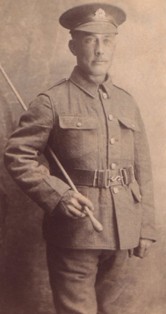 Albert
James Adcock was from Shipdham in Norfolk and enlisted into the
British Army very early in 1916 after the age ranges for enlistment
had been raised from 30 to 35, to reflect the growing shortage in
available manpower. He was sent to France in June or July 1916,
where he went through the final phase of training before being ready
to serve in the front line trenches. On the 25th July or 17th August
1916, he arrived in the 6th Battalion of the Bedfordshire Regiment
as it was stationed west of Albert on the Somme.
Albert
James Adcock was from Shipdham in Norfolk and enlisted into the
British Army very early in 1916 after the age ranges for enlistment
had been raised from 30 to 35, to reflect the growing shortage in
available manpower. He was sent to France in June or July 1916,
where he went through the final phase of training before being ready
to serve in the front line trenches. On the 25th July or 17th August
1916, he arrived in the 6th Battalion of the Bedfordshire Regiment
as it was stationed west of Albert on the Somme. 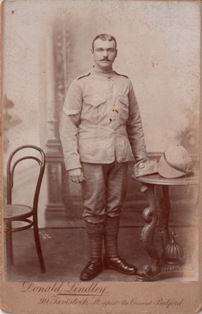
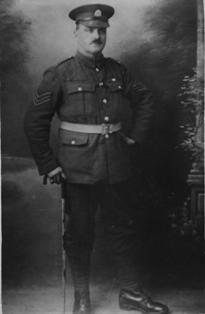
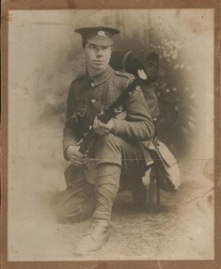
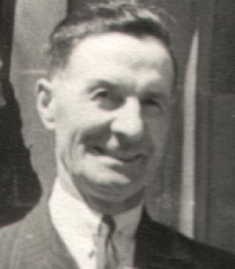 William
was born in Hitchin, 1893, the son of William O'Dell of Lower Gravenhurst
and Sarah Abbis of Hitchin.
William
was born in Hitchin, 1893, the son of William O'Dell of Lower Gravenhurst
and Sarah Abbis of Hitchin.